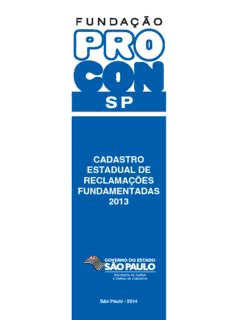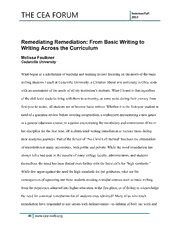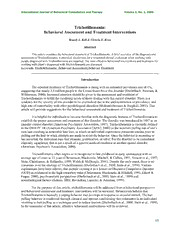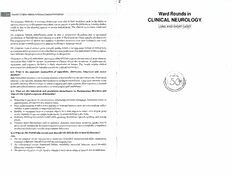
Ward Rounds in Clinical Neurology: Long and Short Cases PDF
Preview Ward Rounds in Clinical Neurology: Long and Short Cases
r Ward Rounds in 10 Section1:HigherMentalFunctions/CerebralHemisphere CLINICAL NEUROLOGY 3rd symptom:Difficulty in wearingclothescan arisedue to limb weakness, pain in the limbsor apraxias.However,inthispatientsincetherewasnoparesisorpainthedifficultyinwearingclothes could be due to the dressing apraxia orsevere bradykinesia.The clinical assessment confirmed LONG AND SHORTCASES . bothofthese 4th symptom: Speech disturbances could be due to progressive dysarthria due to pyramidal involvement or hypophonia and slurring as a part of Parkinsonism (Basal ganglia dysfunction). The progressive lossof speech and inabilityto producesentencesover timeleadingtooneword answerspointstowardsprogressiveaphasialocalizingtolanguagecircuit. 5lh symptom:Lackof interest point towardsapathywhich isan important featureoffrontallobe dysfunctionandispresentinmostoftheParkinsoniansyndromes.Theappearanceofthissymptom laterindicatestheprogressionofthepathologyinthispatient. 67h.symp/o/H.'Thejerkyarrhythmicmovementoftheleftlimbsuggeststhepresenceofaninvoluntary movement that could be tremor, myoclonus or chorea. Given the symptoms of parkinsonism, asymmetry and cognitive decline it is likely myoclonus or tremor. This would require clinical assessmentforconfirmation(stimulussensitivity,corticalsensitivity). Q.l. What is the anatomic localization of immediate, short-term, long-term and motor memory? Ans.Immediatememoryistheworkingmemorywhichlocalizestotheprefrontallobe.Short-term C'‘(/’t/iw/t'/iy , memoryistheepisodicmemorythatlocalizestomedialtemporallobe.Long-term memoryisthe semanticmemorywhichlocalizestolateraltemporalandothercortices.Motormemoryistermed astheproceduralmemoryandlocalizestobasalgangliaandcerebellum. Q.2. What are the behavioral and psychiatric disturbances in Parkinsonian disorders and ^'"''inovation'1'^ whatarethetypicalsymptomsofdementia? Ans. (cid:127) Repeatingofquestionsorconversations, misplacingpersonal belongings,forgettingeventsor appointments,gettinglostonafamiliarroute. (cid:127) Poorunderstandingofsafetyrisks,inabilitytomanagefinances,poordecision-makingability, inabilitytoplancomplexorsequentialactivities. (cid:127) Inabilityto recognizefacesor common objectsor tofind objectsin direct viewdespitegood acuity,inabilitytooperatesimpleimplements,ororientclothingtothebody. (cid:127) Difficultythinkingofcommonwordswhilespeaking,hesitations;speech,spelling,andwriting errors. (cid:127) Unusual mood fluctuations such asagitation, impaired motivation, initiative, apathy, loss of drive,socialwithdrawal,decreasedinterestinpreviousactivities,lossofempathy,compulsive orobsessivebehaviors,sociallyunacceptablebehaviors. Q.3.Whatarethefrontallobecircuitsanddescribethedeficitsduetotheirdysfunction? Ans. 1. The dorsolateral circuit: Dysexecutive syndrome (impaired organizational skills, inattention, { impairedjudgment,impairedsetshiftingandsequencing). 2. The orbitofrontal circuit: Emotional lability, irritability, antisocial behavior, mood disorder, Obsessivecompulsivebehavior 3. Theanteriorcingulatecircuit:Apathy,impairedmotivation,reducedspeechanddisinhibition. Chapter2:ApproachtoaCaseofDementia of aggravatingand relievingfactors. Hiemovementshave not been noticed duringloud sounds, lightortouch. No history of falls while walking, delusions/hallucinations/disinhibition/bladder, urgency/ incontinence/postural giddiness/REM sleep behavior disorder/visual disturbances/swaying whilewalking/tremorsinthelimbs/fluctuationinsymptoms. Treatmenthistory:PatienthadbeentriedonLevodopa/Carhidopa110mgthricedailywithminimal improvementduringwalking. General physical examination: Patient was conscious but not fully oriented to time, place and person.Thespeech washypophonic,monotonous, nonfluentwith reduced verbal output.Single word comprehension, object naming and repetition was preserved. Agrammatism was present. Shecouldnotspeakinsentences.Apraxiaofspeechwaspresent.Stutteringofspeechwaspresent. Comprehensionwasimpairedforcomplexsentences.Frontalreleasesignswerepresent.Bilateral palmomentalreflex,graspreflexandsnout reflexwerepresent.Gropingand utilization behavior wasalsopresent. Parietal lobe functions:Calculation wasimpaired for both simple and complexcalculations.She was unable to copy and unable to hold the pen.The constructional apraxia was present both ideomotor and ideational apraxia were present. Alien limb phenomenon of frontal type was present.Corticalsensations,stereognosis,graphesthesiaand2-pointdiscriminationwereimpaired. Digitspan:Therewasreducedforwardandbackwarddigitspan.MotorLuria’scouldnot bedone duetopoorcomprehension.Therewasnoperseveration. Motorsystem:Therewasnoweaknessorwasting.Therigidityandbradykinesiawerepresentinall thefourlimbsbutleftupperlimbwasmorerigidthantherightupperlimb.Thepatienthadaflexed andstoopedpostureofbody.Allthedeeptendon jerkswerepresent.Plantarreflexwasbilaterally flexor. Involuntary movements:Stimulus sensitive myoclonus was present mainly on left upper limb. Dystonia of left upper limbwasalso present. Rigidity of all 4 limbswas present although it was moreontheleftside.Therewerenotremorsatrest/posture/action. SUMMARY OF THE CASE A 54-year-old lady presenting with progressive dementia with asymmetrical extrapyramidal featuresof slowness,rigidityand involuntary myoclonic movementsof theleft hand.Theexami- nation showed frontal dysexecutive features, parietal lobar dysfunction (dressing apraxia and ideomotorapraxia)andcorticalsensorylosswithcorticalmyoclonusinleftupperlimb. SYMPTOM ANALYSIS OF THE CASE 1st symptom:Slownessof activities in this patient was the firstsymptom suggesting that brady- kinesiaduetothepredominantactivityofindirectpathwayofthebasalgangliawouldlead tothis symptom.However,theexaminationwouldconfirmit. 2ndsymptom:Memorydisturbancesintheformofmisplacingobjects,moneyhandlingproblems andnavigationrelatedproblemspointouttowardstheinvolvementoftheworkingmemory(Frontal lobe dysfunction), calculation defects (Parietal lobe dysfunction) and navigational difficulties (visuospatialdefectsfromparietallobe). Ward Rounds in CHAPTER CLINICAL NEUROLOGY Approach to a Case of Dementia LONG AND SHORT CASES PawanRaj,RaviYadav Editors RaviYadav MBBSMDDM(Neurology)MNAMS AdditionalProfessor CASE STUDY DepartmentofNeurology A54-year-oldladyeducatedupto10thstandard presentedwith: NationalInstituteofMentalHealthandNeurosciences (cid:127) Slownessofactivitiesfor2years. (AnInstituteofNationalImportance) (cid:127) Memorydisturbancesfor2years. Bengaluru,Karnataka,India (cid:127) Difficultyinwearingclothesfor1year. (cid:127) Speechdisturbancesfor1year (cid:127) Lackofinterestinday-to-dayworkfor1year. GirishBaburaoKulkarni MBBSMDDM(Neurology)MNAMS (cid:127) Jerkymovementsoflimbsfor1year. Professor She developed slownessin dailyactivities (bathing, dressing, walking, speaking) for 2years. Shealsostartedforgettingthemoneytransactionsfor2years.Thisprogressedovernext6months. DepartmentofNeurology She started misplacing the objects like spectacles, bags in the house.She would not remember NationalInstituteofMentalHealthandNeurosciences ifshehad taken thetabletsandwhenandwhatshehad forthebreakfast.Shedevelopedwayfind- (AnInstituteofNationalImportance) ingdifficultiesandproblemsinnavigatinginsidethehouse.Sincelast1year,thehusbandnoticed Bengaluru,Karnataka,India change in daily routine in the form of getting up late, reduced activity, not caring to cook food withoutinsight.Shewould not makeeffortstoeat food and would eat a piece of bread with milk withoutaskinganyoneforfood. Forewords She had difficulty in wearingclothes;initially notedin theform of wearing the blouseinside Kameshwar Prasad outwhichwasinfrequenttobeginwithbutforlast12monthsoccursdailyanddifficultyinuntying PramodKumar Pal theknot.Shealsodevelopeddifficultyin brushingteethfor3months,inabilitytolockandunlock MadhuriBehari doorswithkeys,difficultyinwearingslippersandwearingontheoppositefeet.Therewasalackof insighttothesemistakes. Gradually, herspeech volumeand clarity'alsoworsened.Shedevelopedstutteringofspeech, taking multiple attempts to pronounce a word for the last 1 year. She did not speak sentences. Whilesinglewordswere meaningful and appropriate to thequestionasked,she had difficulty in comprehendingcomplexsentences. She also became confined to herself, not talking, reduced speech output, sat at one place withoutinteraction.Shewasaquiet person beforebutshewould extend courtesytowardsguests forfurtherfood,tea,etc.and used toengageinsocialactivities.Afterthis,shestoppedgreetingthe guestsandpreferrednottospeakunlessspokento. She stopped being affectionate/playful towards nephew/niece staying at home.She usually JAYPEE BROTHERS MEDICALPUBLISHERS usedtoputhersareeoverheadasapartofcustomwhichshestoppedsince1year. TheHealthSciences Publisher She also developed jerkiness of the left forearm leading to inability in bolding objects from New Delhi |London|Panama left hand.The movements wereshock-like and not present duringthe sleep.There isno history Chapter1:ApproachtoaCaseofAphasia 7 m K Q.8.VVliatisdysarthriaanditsvarioustypes? IAYPCEiJaypeeBrothersMedicalPublishers(P)Ltd. Ans.Dysarthriaisabnormalarticulationofsoundsorphonemes.Totallossofabilitytoarticulate isanarthria. Headquarters — JaypeeBrothersMedicalPublishers(P)Ltd Mayoclinicclassificationofdysarthria(Duffy,1995) 6types: 4838/24,AnsariRoad,Daryaganj 1. Flaccid:Lowermotorneuron,btdbarweakness,myasthenia. NewDelhi110002,India 2. Spastic:Bilateral upper motor neuron (or) unilateral UMN—strokes, tumors, Primary lateral Phone:+91-11-43574357 sclerosis. Fax:+91-11-43574314 Email:jaypee@jaypeebrothers.com 34.. AHtyapxoick:inCeetrice:bEelxltarrapdyisreaamseidsa(ls—troPkaer,kdinesgoenn’serdaitsievaesdei.sease). OJ.Pv.eMrseedaicsaOlLfftidces Jaypee-HighlightsMedicalPublishersInc 5. Hyperkinetic:Extrapyramidal—Dystonia,Huntington’sdisease. — 83VictoriaStreet,London CityofKnowledge,Bid.235,2ndFloor 6. Mixed-spasticand flaccid:Upper and lower motor neuron involvement Amyotrophiclateral . SW1H0HW(UK) Clayton,PanamaCity,Panama sclerosis,multiplestrokes Phone:+442031708910 Phone:+1507-301-0496 Fax:+44(0)2030086180 Fax:+1507-301-0499 Q.9.Howspeechandlanguagedisordersaretreated? Email:info@jpmedpub.com Email:cservice@jphmedical.com Ans.TreatmentofAphasia JaypeeBrothersMedicalPublishers(P)Ltd (cid:127) Client-specificbehaviorsaretargeted. Bhotahity,Kathmandu,Nepal (cid:127) Targetgreatestimprovementinfunctionalcommunication. Phone:+977-9741283608 (cid:127) Startfromsimpletomorecomplextasks. Email:kathmandu@jaypeebrothers.com (cid:127) Reinforcetheresponse—givefeedback. Website:www.jaypeebrothers.com (cid:127) Teachself-monitoringskills. Website:www.jaypeedigital.com (cid:127) Trainspouse/relativetoevoke,promptandsupportthepatient. ©2019,JaypeeBrothersMedicalPublishers Majority improve spontaneously (in days, weeks, months) (Neuronal plasticity). Other methodsreassurance,speechrehabilitation.Prognosisbetterforleft-handedpersons. The viewsandopinions expressedinthis bookare solely those of theoriginalcontributor(s)/author(s) anddonot necessarilyrepresentthoseofeditor(s)ofthebook. TreatmentofSpeechDisorders All rights reserved.No part of this publication may be reproduced,stored or transmitted in any form or by any Dependsontypeofdysarthriaandnaturalhistoryofthedisease: means,electronic,mechanical,photocopying,recordingorotherwise,withoutthepriorpermissionin writingofthe publishers. (cid:127) Pacing devices, palatal lifts, communication boards, visual cues, pharyngeal flap, vocal cord All brand names and product names used in this book are trade names,service marks,trademarks or registered tefloninjection. trademarksoftheirrespectiveowners.Thepublisherisnotassociatedwithanyproductorvendormentionedinthis (cid:127) Speechtherapy,psychotherapy. book. (cid:127) Botulinumtoxin—injection(forspasmodicdysphonia). Medicalknowledgeandpracticechangeconstantly.Thisbookisdesignedtoprovideaccurate,authoritativeinforma (cid:127) For stuttering Behavioral techniques, altered auditory feedback, pharmacotherapy- tionaboutthesubjectmatterinquestion.However,readersareadvisedtocheckthemostcurrentinformationavailable risperidone,olanzapine,paroxetine. onproceduresincludedandcheckinformationfromthemanufacturerofeachproducttobeadministered,toverify the recommended dose, formula, method and duration of administration, adverse effects and contraindications. It is the responsibility of thepractitioner to take all appropriate safety precautions.Neither the publisher nor the author(s)/editor(s)assumeanyliabilityforanyinjuryand/ordamagetopersonsorpropertyarisingfromorrelatedtouse ofmaterialinthisbook. Thisbookissoldontheunderstandingthatthepublisherisnotengagedinprovidingprofessionalmedicalservices. Ifsuchadviceorservicesarerequired,theservicesofacompetentmedicalprofessionalshouldbesought. Every effort has been made where necessary to contact holders of copyright to obtain permission to reproduce copyrightmaterial.Ifany havebeeninadvertently overlooked,thepublisher willbepleasedtomakethenecessary arrangementsatthefirst opportunity.TheCD/DVD-ROM(ifany)providedinthesealedenvelopewiththisbookis complimentaryandfreeofcost.Notmeantforsale. Inquiriesforbulksalesmaybesolicitedat:jaypee@jaypeebrothers.com WardRoundsinClinicalNeurology:LongandShortCases FirstEdition:2019 ISBN:978-93-5270-590-0 PrintedatSanatPrinters ||| ‘ . Section1:HigherMentalFunctions/CerebralHemisphere Q.2.Wherearethecentersforlanguagelocatedandwhat istheirfunctionand bloodsupply totheareas? Ans. There are four main language areas (Perisylvian Area): 2 receptive and 2 executive which aresituatedinthelefthemisphereinright-handedperson: 1. Reception: It is situated in the posterior superior temporal gyrus (area 22) and Heschl’s gyri(area41and42).Posteriorpartofarea22in planumtemporaleisWernicke’sarea (Blood supplyisbyinferiordivisionoftheleftmiddlecerebralartery). 2. Receptivearea:Angulargyrus(area39) in inferiorparietal lobule,anteriortovisual receptive areas. 3. Execution: Posterior end of inferior frontal convolution (area 44 and 45), called as Broca’s area(Bloodsupplyisbyupperdivisionofleftmiddlecerebralartery). — 4. Exner'swritingarea posteriorendof2ndfrontalconvolution. Dedicated to Q.3. What is the normal distribution of handedness in general population? How it is deter- mined? Our Ans.About90-95%generalpopulationareright-handed(theyinnatelychooserighthand). Patientswhoarethefinalbenefactorsand Edinburgh handednessinventory:Thisinventorydeterminesthe handedness by assessingwhich purposeofthemedicalprofession hand is used for various daily routine tasks (10 types like: writing, drawing, throwing a ball, Studentswhoareacquiringtraininginneurology scissor, toothbrush, knife, spoon, broomstick, strike a matchbox, open a box lid). Each task is Teacherswhohavetaughtusneurology givenascoreandafinalscoreisgeneratedwhichsuggeststhehandedness. Our familieswhosupportedus Determining handedness: Ask which hand is preferred for throwing a ball, threading a needle, sewing, using a tennis racket or hammer, which eye is used for sighting a target with a rifle or lookingthroughakey-hole,telescope,etc.(Eyepreferencecoincideswithhandpreference). Mywife,Pramila Mydaughter,Sanyukta Q.4.WhatarethefeaturesofBroca'saphasia? Ans. Patients with Broca’s or motor aphasia have nonfluent spontaneous speech, which is —RaviYadav telegraphic, dysarthric or mute, impaired naming, reading and repetition, writing may be Mywife,Sandhya dysmorphic or dysgrammatic, can have associated right hemiparesis, right hemisensory loss or evenapraxiaofleftlimbs.Comprehensionwillbenormal. Myson,Shreeram Mydaughter,Sanjana Q.5.WhatarethefeaturesofWernicke’saphasia? —GirishBaburaoKulkarni Ans.The spontaneousspeech will befluentwith paraphasicerrors, usuallyspeech will be non- dysarthric and can be logorrheic. Comprehension is impaired with difficulty in pointing things and answering to yes and no questions. Naming, reading writing and repetition are impaired. Can have associated right hemianopia.In pureWernicke'saphasia motor andsensorysigns are usuallyminimalorabsent. Q.6.Whatarethefeaturesofglobalaphasia? Ans. Patients are usually mute or have nonfluent spontaneous speech, impaired naming, comprehension, repetition, reading and writing.They have associated dense right hemiparesis, hemisensorylossandrighthemianopia. Q.7.Whatisanomiaagraphiaandalexia? Ans. (cid:127) Anomiaisimpairednaming (cid:127) Agraphiaisimpairedwriting (cid:127) Alexiaisimpairedreading. Chapter1:ApproachtoaCaseofAphasia No history of ear discharge, fever, trauma, menstrual irregularities or consumption of hormonalpreparations. On Examination General physical examination: She had mild pallor. Blood pressure, cardiac, abdominal and respiratorysystemswerenormal. Neurological Examination Shewasright-handed,withnoformaleducation.Shewasconscious,abletowalkaround. Minimental status examination (MMSE): Could not be assessed because of her language . disturbances Language Assessment (cid:127) Spontaneousspeech:It wasfluent,effortless, with paraphasicerrors,speech had no meaning. She could not speak about fer personal details(name, address, occupation), and shespeaks irrelevantly,couldnotdescribeapicture. (cid:127) Comprehension:Severelyimpairedwithinability topoint tosaid objectand could not answer toyandnquestions. (cid:127) Repetition:Could notunderstandthecommands. (cid:127) Naming:Notabletodo. (cid:127) Reading:Couldnotbeassessed. (cid:127) Writing:Couldnotwritehername. Fundus was normal no papilledema, visual acuity was grossly normal with right-sided hemianopia. Mildright-sidedUMNfacialnervepalsy. Motor,sensoryandcerebellarsystem:Normal. Summary Middle aged lady with no premorbid diseases presented with subacute onset of new headache with raised intracranial tension.Oneweeklater,shedeveloped languagedisturbancessuggestive ofsensoryorWernicke’saphasiawithmildUMNfacialpalsyandright-sidedhemianopialocalizing tolefttemporoparietalregionofbrain.Onfurtherevaluationshewasfoundtohaveleft temporo- parietalvenousinfarctduetocerebralvenousthrombosis. Q.l.Definelanguageandspeechandinwhatwaytheirdisturbancesmanifest? Ans. Languageisdefined ascomplexsystem of communication withsymbolsand soundsand it also hasrulesfor their use.Speech is defined asarticulation and phonation of languagesounds anditisapartoflanguage. The disturbances of language are called as aphasias, which means loss or impairment of production orcomprehension ofspokenorwritten languagesecondarytoacquired lesion of the brain. Disorders of speech includes dysarthria (defective articulation with intact mental functions and normalsyntax),dysphonia (alteration or lossof voicedue to laryngeal disorder or itsinner- vation),andstuttering. E| Section1:HigherMentalFunctions/CerebralHemisphere Contributors Neurological Examination Minimentalstatusscore(MMSE):27/30. Language (cid:127) Spontaneousspeech:Reducedfluency(categoryandverbal)andword output,usesfewwords to answer rather than sentences,speech was effortful, occasional paraphasiaswere present, AnishMehta MDDM KrishnanA MBBSDM(Neurology) noneologisms.Prosodynormal,nodysarthria. SeniorResident SeniorResident (cid:127) Comprehension:AnswersYesandNotoquestionsandpointingtotheobjectscorrectly. DepartmentofNeurology NationalInstituteofMentalHealthand (cid:127) Writing:Writingspontaneously,writinginresponsetocommandtocopyandtodictationwere MSRamaiahMedicalCollegeandHospital Neurosciences impaired. Bengaluru,Karnataka,India Bengaluru,Karnataka,India (cid:127) Repetition:Couldrepeatsentencesupto4-5words. (cid:127) Naming:Couldnameobjects,colors,etc.buthaddifficultyin namingpartsoftheobjects. BirinderSinghPaul MDDM PawanRaj MBBS (cid:127) Reading:Couldreadfewwordsbutcould notreadcontinuously. AssociateProfessor SeniorResident DepartmentofNeurology DepartmentofNeurology NationalInstituteofMentalHealthand DayanandMedicalCollegeandHospital Cranial Nerves Ludhiana,Punjab,India Neurosciences (cid:127) Visualacuityrightside6/9,leftside6/12withright-sidedhemianopia. Bengaluru,Karnataka,India (cid:127) Pupillaryreactionopticfundusandeyemovementswerenormal. (cid:127) Right-sideduppermotorneuron(UMN)facialpalsywasseen. DeeptiVibha MDDM PradeepKallollimath MDDM AssistantProfessor AssistantProfessor (cid:127) Othercranialnervesnormal. DepartmentofNeurology DepartmentofNeurology (cid:127) Motorsystem:Rightelbowandwristextension4/5,restofthepowerwasnormal. AllIndiaInstituteofMedicalSciences KarnatakaInstituteofMedicalSciences (cid:127) Sensorysystem:Normal. NewDelhi,India Hubballi,Karnataka,India Summary DevangiDesai MD RagasudhaB MBBSPhD{ClinicalNeuroscience)Scholar JuniorResident this middle-aged lady with 5 years history of hypertension presented with episodes of left Professor DepartmentofClinicalNeurosciences DepartmentofMedicine monocular visual loss and reduced carotid volume suggestive of left carotid artery disease with NationalInstituteofMentalHealthand PramukhswamiMedicalCollegeandHospital recent symptoms of motor and language disturbances in the left-sided carotid/middle cerebral Anand,Gujarat,India Neurosciences artery territory. She had motor weakness pyramidal in nature localizing above the pons and Bengaluru,Karnataka,India language disturbance in the form of Motor (Broca's) aphasia localizing to left frontal motor speecharea.Inherrepetition wasalsoinvolvedsuggestiveofcorticallocalizationofthelanguage GirishBaburaoKulkarni MBBSMDDM(Neurology)MNAMS RavinderJeetSingh MBBSDM disturbances. Professor AssistantProfessor DepartmentofNeurology DepartmentofNeurology NationalInstituteofMentalHealthand NationalInstituteofMentalHealthand PATIENT NO. 2 Neurosciences Neurosciences Bengaluru,Karnataka,India Bengaluru,Karnataka,India A42-year-oldladywithnoformaleducation, right-handed presented with historyofheadacheof 15daysandspeechdisturbancesfromthepast7days. Headache was acute in onset,continuous, throbbing, bifrontal, associated with vomiting, no HardeepSinghMalhotra MBBSMDDM(Neurology) RPraovfeinssdorraKumarGarg MBBSMDDM(Neurology) photophobia or phonophobia, or visual disturbances, not relieved with analgesics associated AdditionalProfessor DepartmentofNeurology DepartmentofNeurology withdifficultyindoingwork. KingGeorge'sMedicalUniversity KingGeorge'sMedicalUniversity Eightdaysaftertheonsetofheadacheshesuddenlydevelopedspeechdisturbances.Relatives Lucknow,UttarPradesh,India Lucknow,UttarPradesh,India noticedthatshewasnotabletounderstand thespokenwordsandshewasspeakingbutnobody could understand the meaningof thesentences.Shewascallingher relatives bydifferent words RaviYadav MBBSMDDM(Neurology)MNAMS whichhadnomeaning,wasspeakingirrelevantlyandtheycould notmakeoutmeaningfromher ImranRizvi MD AdditionalProfessor SeniorResident DepartmentofNeurology speech. DepartmentofNeurology NationalInstituteofMentalHealthand No historyof lossof consciousness,visualsymptoms, weaknessof limbs,seizuresorsensory KingGeorge'sMedicalUniversity Neurosciences disturbances. Lucknow,UttarPradesh,India Bengaluru,Karnataka,India viii WardRoundsinClinicalNeurology CHAPTER RohanMahale MBBSDM SoahamDesai MDDM AssociateProfessor Professor DepartmentofNeurology DepartmentofNeurology MSRamaiahMedicalCollegeandHospital PramukhswamiMedicalCollegeandHospital Approach to a Case of Aphasia Bengaluru,Karnataka,India Anand,Gujarat,India SeenaVengalil MDDM VaibhavWadwekar MDDM PostdocFellowinNeuromuscularDisorders AdditionalProfessor DepartmentofNeurology DepartmentofNeurology GirishBaburaoKulkarni,KrishnanA NationalInstituteofMentalHealthand JawaharlalInstituteofPostgraduateMedical Neurosciences EducationandResearch(JIPMER) Bengaluru,Karnataka,India Puducherry,India SheshagiriDV MBBSDM VikramVHolla MDDM SeniorResident SeniorResident PATIENT NO. 1 DepartmentofNeurology DepartmentofNeurology NationalInstituteofMentalHealthandNeurosciences KingGeorge'sMedicalUniversity A42-year-oldlight-handedgraduateladypresentedwith: Bengaluru,Karnataka,India Lucknow,UttarPradesh,India (cid:127) Recurrentepisodesofright-sidedlimbweaknessfortwomonths. (cid:127) Speakingdifficultyfortwomonths. Shehadfourdiscreteepisodesofweakness.Initially,twoepisodesovertwoconsecutivedays, andlatertwomoreepisodes. Duringher initial twoepisodes,shedevelopedsudden onset ofdistal right upper limbweak- nesswithheavinessintherightlegwhichprogressedoverfiveminutesandlastedfor i0minutes. Therewasnohistoryofspeechorvisualsymptomsandtheweaknessimprovedcompletely. One and half months later, she was apparently normal and doing her routine work in the morning,when suddenlyshe developed difficulty in speaking.Her word output reduced toone or two and she started communicating with gestures.She was able to comprehend the spoken wordbutcouldnotreadandwrite.Shecouldnotnamepersonsandobjectsaroundher.Therewas no limb and visual symptoms, ihe speech disturbances were gradually improving when she presented butstillshewasfacingdifficultyin conversingduetodifficulty'in namingobjectsand persons,eventhoughhercomprehensionwasnormal. Twodayspriortoherpresentationtoourhospital,sheagaindevelopedsuddenonset of mild right-sided upperlimb morethan lowerlimbweaknesswithout newspeechorvisualsymptoms. Hieweaknessprogressedover15-20minutes,thenstartedimproving. Novisualsymptomswereassociatedwithanyoftheserecentepisodes. Shewasknown hypertensivefromthepast5yearson regulartreatment.She hadexperienced 5-6 attacks of transient blurring of vision in her left eye lasting for few minutes recovering spontaneouslyfullyover15minutesoneyearpriortoherpresentillness. On Examination — She was moderately built and nourished. I’ulse rate 76/minute, regular, reduced volume in left carotid artery. No bruits.Blood pressure in right upper limb 180/90 mm Hg, left upper limb 160/90mmHg.Cardiacand respiratorysystemexaminationwerenormal. — (cid:127) Handedness Right-handed — (cid:127) Education Graduate — (cid:127) Cardia,respiratorysystem Withinnormallimits. 6 Foreword LateDrCMillerFisherusedtosay,'youlearnneurologystrokebystroke'.Whathemeantisthat by analyzing each of stroke in detail,i.e. structures involved, site of lesion, nature of lesion, etiopathogenesis of the lesion and resulting functional disability; a student can master the . fundamentals of neurology Even though technology and molecular biology has advanced rapidly and tremendously, still Dr Fisher's statement remains largely true. I would slightly modify thestatement,ifImay,tosay that'youlearn neurologycase bycase'.Eachcase needs tobeanalyzedindetailasabovethroughsymptomanalysistodeducethestructuresinvolved . and all the above-mentioned steps to arrive at a diagnosis and management Needless to mentionthatinemergency,youmaynot completeall the steps before startingmanagement, . and sometimes management steps are clear even when the diagnosis is not entirely clear In such situations, management takes precedence over the final diagnosis. However, funda- mental point is that each case needs in-depth analysis.No two cases are identical.They vary fromeachotherineithergrossorsubtlewaytomeritdetailedanalysis. Case by case analysis in neurology is facilitated by a well-organized neuroanatomy and a . well-established methodology passedon fromgenerationtogeneration of teachers Unfortu- nately, this practice seems to be under threat by time constraints and the technological advancessuchasCTandMRI.ItisinthiscontextthatthisbookWardRoundsinClinicalNeurology is very timely and usefulfor studentsof neurology.Ward roundsare longer inneurologythan in other super-specialties of medicine,because each caseis analyzedin detail.However,they are also the source of joy and fulfillment in the profession. As each case is unique,it poses . different questions and different challenges This variation from case to case provides new learning opportunities,and prevents monotony and boredom and makes job of neurologists enjoyableandprofessionallysatisfying. I am confident the book will help students to approach different types of cases appro- priately,efficiently and joyfully.Dr Ravi Yadav has done a great job of bringing together an eclectic group of contributors, who have painstakingly delineated approaches to all major clinical presentations encountered in neurology practice. I congratulate Dr Ravi Yadav and all the contributors for successfully completing this great work. I am sure the students will . immenselyenjoyreadingthebookandgreatlybenefitfromit KameshwarPrasad ProfessorandPlead,DepartmentofNeurology Chief,NeurosciencesCentre Director,ClinicalEpidemiologyUnit AllIndiaInstituteofMedicalSciences NewDelhi,India S E C T I O N Higher Mental Functions/ Cerebral Hemisphere ApproachtoaCaseofAphasia GirishBaburaoKulkarni,KrishnanA ApproachtoaCaseofDementia PawanRaj,RaviYadav ApproachtoApraxia RagasudhaB,RaviYadav ApproachtoAgnosiaandAlexia RagasudhaB,RaviYadav
The list of books you might like

Rich Dad Poor Dad

Haunting Adeline

The Sweetest Oblivion (Made Book 1)

Credence

Marlinspike Sailor’s Knots and Crafts
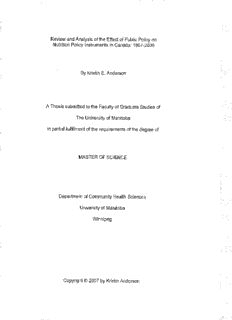
By Kristin E. Anderson
![BNL - Superconducting Accelerator Magnets [presentation slides] book image](https://cdn.pdfdrive.to/media/content/thumbnails/e210c065-f8e6-4d85-899f-6262e2e9ed29.webp)
BNL - Superconducting Accelerator Magnets [presentation slides]

Il cinema americano contemporaneo
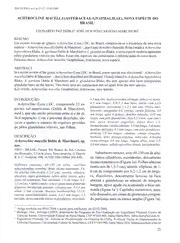
Achyrocline macella (Asteraceae-Gnaphalieae), nova espécie do Brasil
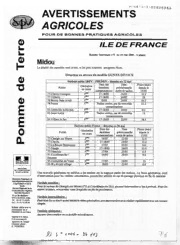
Avertissements Agricoles - Pomme de terre - Ile de France - 2006 - 5

CENTRIFLOW 3D PLug FaN WITH PM MOTOR
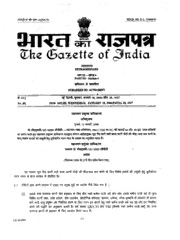
Extraordinary Gazette of India, 2006, No. 622
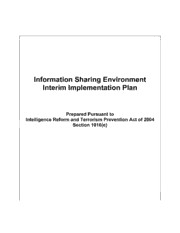
DTIC ADA457505: Information Sharing Environment Interim Implementation Plan
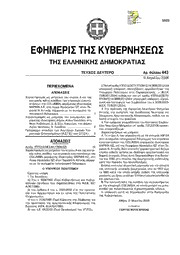
Greek Government Gazette: Part 2, 2006 no. 443
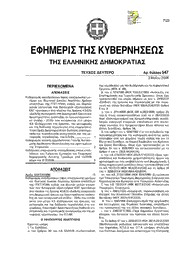
Greek Government Gazette: Part 2, 2006 no. 547

The Relationship Book for Newly Committed Couples

Little Snap The PostBoy by Victor St Clair mdash
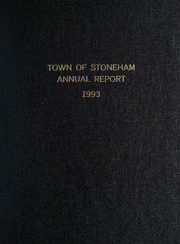
Town of Stoneham Annual Report
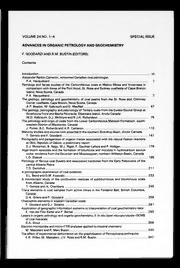
International Journal of Coal Geology 1993: Vol 24 Table of Contents
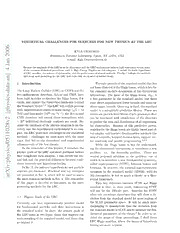
Statistical Challenges for Searches for New Physics at the LHC
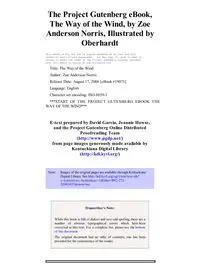
The Way of the Wind by Zoe Anderson Norris
